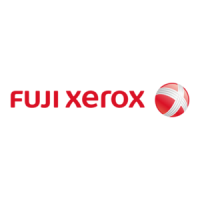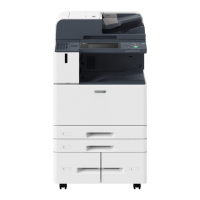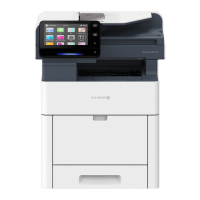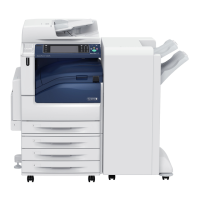Do you have a question about the Fuji Xerox ApeosPort-VII CP4421 and is the answer not in the manual?
| Brand | Fuji Xerox |
|---|---|
| Model | ApeosPort-VII CP4421 |
| Category | Printer |
| Language | English |
Key security measures and recommendations to protect the device from unauthorized access and attacks.
Overview of the printer's main physical parts and their functions, including front, side, and rear views.
Information regarding software licenses, including open-source software and GNU General Public License.
Procedures for turning the device on, off, making initial settings, and remote power management.
Steps for connecting the device via Ethernet, USB, and configuring wireless LAN settings.
How to configure Wi-Fi and Wi-Fi Direct connections for network access.
Configuration settings required for using email features like sending and receiving emails.
Managing device power consumption by entering Low Power or Sleep modes.
Overview of touch screen navigation, home screen layout, and basic operation gestures.
Detailed instructions for loading various paper types and sizes into trays and bypass.
Steps to log in using the touch screen or IC card reader for device authentication.
How to print documents from a computer using drivers or internet services.
Managing and printing jobs stored directly on the device like Sample Set, Delayed, Secure, and Charge Print.
Printing files directly from a USB memory device, including photos and documents.
Printing from mobile devices, AirPrint, Google Cloud Print, and Mopria Print Service.
Overview of the Jobs app for checking and managing print job statuses.
How to check the status of print jobs, including displaying specific job details.
Procedure to cancel active or pending print jobs through the Jobs menu.
How to forcibly print jobs that are waiting or paused, and resume pending jobs.
Settings for touch-panel display language, keyboard layout, and language button visibility.
Checking device information, printing reports like configuration, PCL, PDF, and job status.
Configuration of paper trays, including type, size, priority, and auto tray switching.
Procedures for device maintenance, including checking supplies, EP system, and software updates.
System-level configurations for clock, timers, power saving, audio tones, and screen settings.
Settings related to device applications, print features, stored jobs, and connectivity.
Configuring network interfaces, protocols, IP settings, proxy servers, and email settings.
Configuration of user authentication methods, security settings, and accounting features.
Using SSL/TLS to encrypt HTTP communications for secure data transfer.
Enabling IPsec for encrypted network packet communication with remote devices.
Steps to set up SSL/TLS certificates for encrypted HTTP communication.
Procedures to configure IPsec communication using certificates or preshared keys.
Explanation of authentication types, user roles, and access control for device services.
Steps to enable and configure user authentication methods and access restrictions.
Setup procedures for using IC card readers for authentication and linking with LDAP.
Setting up different types of account administration for tracking usage and user limits.
Procedures for replacing consumables like toner, waste toner container, and drum cartridges.
Instructions for cleaning external and internal device components, including printheads and sensors.
Calibrating color tone and determining density settings for consistent print quality.
Manually adjusting image position and alignment for paper registration and lead/side alignment.
General guidance and procedures for resolving common device issues.
Troubleshooting steps for common device issues like power, status LEDs, and touch screen errors.
Diagnosing and fixing common image quality problems such as faint prints, dots, or lines.
Troubleshooting network connectivity, TCP/IP, email features, and internet connection issues.
Step-by-step instructions for clearing paper jams from various trays and internal units.
Information on optional components provided for the device, directing to the official website.
Procedures for installing and removing the Wireless LAN Kit.
Instructions for installing optional storage devices, emphasizing data leak prevention.
Detailed technical specifications of the device's print function, paper handling, and system components.
Information on printer emulation modes, switching languages, and settings for ESC/P and HP-GL/2.
Definition of standard and extended printable areas, including margin limitations.











